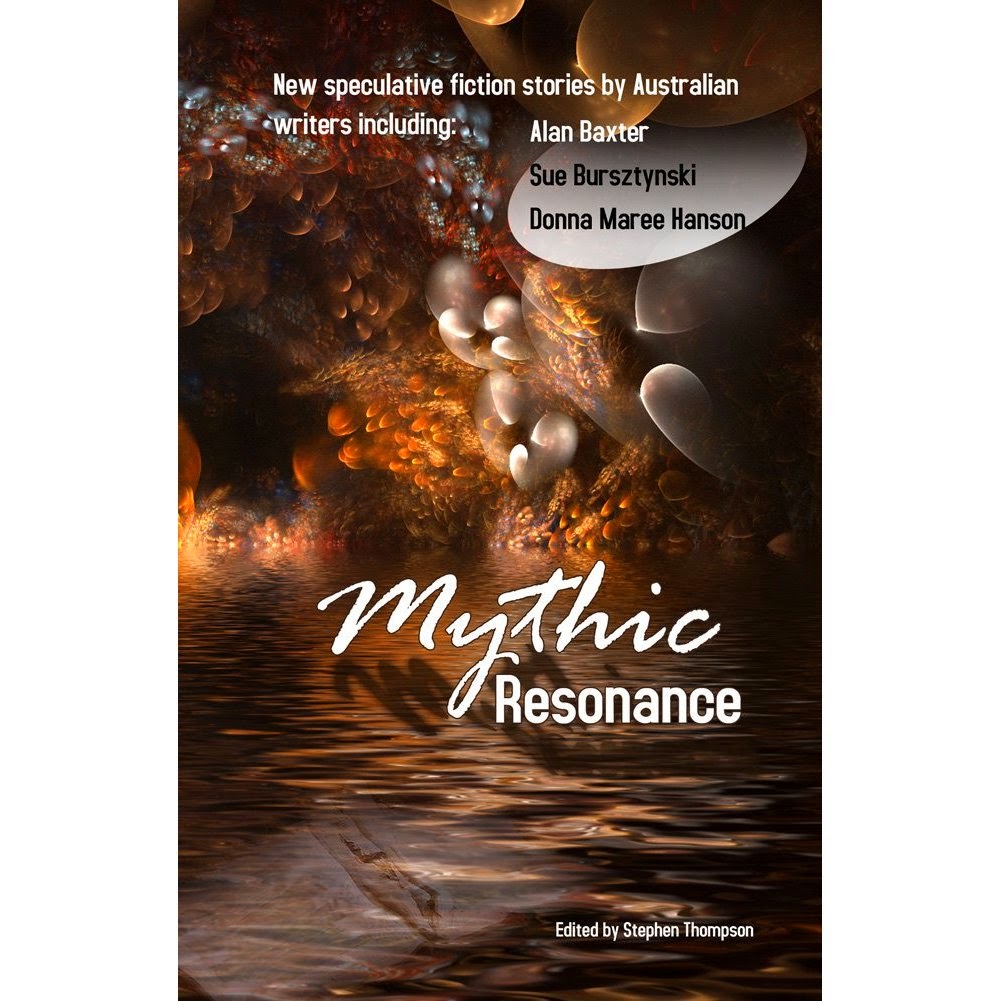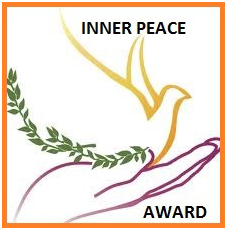About Me
- Satima Flavell
- Perth, Western Australia, Australia
- I am based in Perth, Western Australia. You might enjoy my books - The Dagger of Dresnia, the first book of the Talismans Trilogy, is available at all good online book shops as is Book two, The Cloak of Challiver. Book three, The Seer of Syland, is in preparation. I trained in piano and singing at the NSW Conservatorium of Music. I also trained in dance (Scully-Borovansky, WAAPA) and drama (NIDA). Since 1987 I have been writing reviews of performances in all genres for a variety of publications, including Music Maker, ArtsWest, Dance Australia, The Australian and others. Now semi-retired, I still write occasionally for the ArtsHub website.
My books
The first two books of my trilogy, The Talismans, (The Dagger of Dresnia, and book two, The Cloak of Challiver) are available in e-book format from Smashwords, Amazon and other online sellers. Book three of the trilogy, The Seer of Syland, is in preparation.I also have a short story, 'La Belle Dame', in print - see Mythic Resonance below - as well as well as a few poems in various places.
The best way to contact me is via Facebook at https://www.facebook.com/satimaflavell
Buy The Talismans
The first two books of The Talismans trilogy were published by Satalyte Publications, which, sadly, has gone out of business. However, The Dagger of Dresnia and The Cloak of Challiver are available as ebooks on the usual book-selling websites, and book three, The Seer of Syland, is in preparation.
The easiest way to contact me is via Facebook.
The Dagger of Dresnia
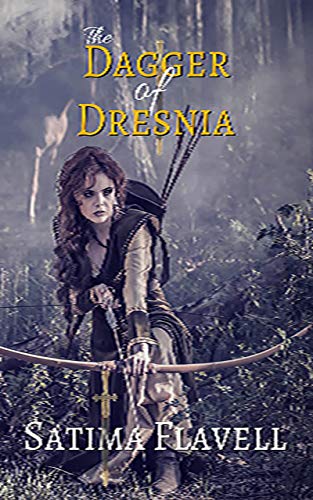
The Cloak of Challiver, Book two of The Talismans
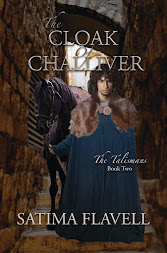
Available as an e-book on Amazon and other online booksellers.
Mythic Resonance
Mythic Resonance is an excellent anthology that includes my short story 'La Belle Dame', together with great stories from Alan Baxter, Donna Maree Hanson, Sue Burstynski, Nike Sulway and nine more fantastic authors! Just $US3.99 from Amazon.
Got a Kindle? Check out Mythic Resonance. 
Follow me on Twitter
Share a link on Twitter
For Readers, Writers & Editors
- A dilemma about characters
- Adelaide Writers Week, 2009
- Adjectives, commas and confusion
- An artist's conflict
- An editor's role
- Authorial voice, passive writing and the passive voice
- Common misuses: common expressions
- Common misuses: confusing words
- Common misuses: pronouns - subject and object
- Conversations with a character
- Critiquing Groups
- Does length matter?
- Dont sweat the small stuff: formatting
- Free help for writers
- How much magic is too much?
- Know your characters via astrology
- Like to be an editor?
- Modern Writing Techniques
- My best reads of 2007
- My best reads of 2008
- My favourite dead authors
- My favourite modern authors
- My influential authors
- Planning and Flimmering
- Planning vs Flimmering again
- Psychological Spec-Fic
- Readers' pet hates
- Reading, 2009
- Reality check: so you want to be a writer?
- Sensory detail is important!
- Speculative Fiction - what is it?
- Spelling reform?
- Substantive or linking verbs
- The creative cycle
- The promiscuous artist
- The revenge of omni rampant
- The value of "how-to" lists for writers
- Write a decent synopsis
- Write a review worth reading
- Writers block 1
- Writers block 2
- Writers block 3
- Writers need editors!
- Writers, Depression and Addiction
- Writing in dialect, accent or register
- Writing it Right: notes for apprentice authors
Interviews with authors
My Blog List
-
Whatcha Reading? April 2024, Part Two - Hello, everyone! I’m back and big thanks to Sarah for driving the Whatcha Reading party bus in my absence. I loaded up my ereader and my Libro.fm app for m...2 hours ago
-
The Shark Is Closed for Queries - Please visit In Memoriam: Janet Reid for more about the late great Shark.7 hours ago
-
New Medieval Books: From Genghis Khan to Tamerlane - A look at how the peoples and states of Central Asia and Persia coped with the Mongol invasions and conquests, ranging from the Ilkhanate to the Timurids. ...9 hours ago
-
A To Z 2024 - Villains! - X Is for eXtras - In all the, the years I’ve been doing the A to Z Challenge, I’ve only had one occasion when I got a real X word - during my Greek Mythology posts. Tha...13 hours ago
-
New Books and ARCs, 4/26/24 - As we hurtle toward the end of another April, there’s still time to tuck in one more stack of new books and ARCs that have come to the Scalzi Compound. Wha...14 hours ago
-
Kathy Stewart books… - Kathy Stewart was a stalwart of Gold Coast Writers some years back and I appreciated her help and support with my writing. She can edit and write up some e...18 hours ago
-
Sometimes You’re a Wedged Bear in Great Tightness - That is, you are stuck. Whether you’re stuck because you got yourself in that situation or because of life circumstances… Being stuck is kind of ho...23 hours ago
-
Unlocking the Moon’s secrets: from Galileo to giant impact - Unlocking the Moon’s secrets: from Galileo to giant impact It is a curious fact that some of the most obvious questions about our planet have been the ha...1 day ago
-
To Tate Britain - and Ellen Terry’s Dress. By Penny Dolan - The iconic portrait of Ellen Terry as Lady Macbeth in her beetle-wing dress has been a favourite painting of mine for many, many years. ...1 day ago
-
Samantha M. Bailey - Samantha M. Bailey is the USA Today, Amazon Charts, and #1 international bestselling author of Woman on the Edge, Watch Out for Her, and A Friend in the Da...2 days ago
-
Plotting 101: Top 10 Tips For Crafting Compelling Stories - Plotting Like a Pro One of the most searched-for terms on this blog is ‘help with plotting’. Plot – aka structure if you’re a screenwriter – can be a tri...5 days ago
-
The Great Discworld Retrospective No. 14: Lords And Ladies - After the colossal success of Small Gods, you might think that Terry Pratchett might have wanted to try out some other new ideas. However, given the way th...6 days ago
-
5 Common Problems With Beginnings - *By Janice Hardy, @Janice_Hardy* *If your beginning isn't working, no one will get to the ending.* A novel’s beginning is under a lot of pressure. It has...1 week ago
-
I promised photos from the trip - I feel like a slacker but I have been busy. There’s so much going on, so much to write about. We’ve been back six weeks. It feels like a short time and a l...1 week ago
-
I promised photos from the trip - I feel like a slacker but I have been busy. There’s so much going on, so much to write about. We’ve been back six weeks. It feels like a short time and a l...1 week ago
-
Mastering Blog Post Creation: 10 Essential Steps to Enhance Your Writing Process - The post Mastering Blog Post Creation: 10 Essential Steps to Enhance Your Writing Process appeared first on ProBlogger. It hits you like a TON of BRICKS!...1 week ago
-
Newsletter 16th April 2024 - Here’s a copy of my newsletter from April 16th, 2024. Sign up via my website to get newsletters directly to your inbox (and remember to check your Spam f...1 week ago
-
'The Tic-Toc Boy of Constantinople' in the revered The Conversation as one of five "Australian literary works of particular relevance to national conversations about AI" - I've always respected and admired *The Conversation, *so it is a humbling privilege to have 'The Tic-Toc Boy of Constantinople' written about in *The Con...2 weeks ago
-
Ourselves: 100 Micro Memoirs - I am lucky enough to have a non-fiction piece, ‘Helicopter Parents’, in this new release from Night Parrot Press, Ourselves: 100 Micro Memoirs. This is the...2 weeks ago
-
The Dead Boys Detective Agency. It is a very silly name. But accurate. - April 25th. DEAD BOY DETECTIVES. It's really good -- it's funny, it's smart, it's scary, and it even has a few familiar faces... (And no, you won...3 weeks ago
-
#3 WEP GET TOGETHER - APRIL 2024 - IT'S THE A - Z CHALLENGE! - Hi WEPpers and friends! Already time for out third Get Together. Life is flashing by! Hit us with your news, writerly or personal. We'd love to hear fro...3 weeks ago
-
Henry of Lancaster and His Children - The close bonds which Edward II's cousin Henry of Lancaster, earl of Lancaster and Leicester, forged with his children have fascinated me for a long time...3 weeks ago
-
Urbenville Adventure - Wow, Urbenville, what an adventure! An approach so tough I nearly threw up. Climbs so hard I’m still hurting. Plants so vicious, one grass-spike tore my co...4 weeks ago
-
Researching the birth of the first domestic violence refuge - Read a researcher's journey exploring the first few years of Chiswick Women's Aid. The post Researching the birth of the first domestic violence refuge ...5 weeks ago
-
Trip to Brazil 2024 - Landing in the Megalopolis of Sao Paulo On February 7th I flew to Sao Paulo, Brazil to start a 17 day teachi...1 month ago
-
Photo Parade 2023 - A bit of fun at the beginning of the new year. I’m following several German travel blogs, and that way came across the annual Photo Parade (Fotoparade) on ...3 months ago
-
Happy Public Domain Day 2024, the end of copyright for 1928 works - My annual reminder that January 1st is Public Domain Day, and this year copyright has ended for books, movies, and music first published in the U.S. in 192...3 months ago
-
The White Horse Band - Live Blues/Rock - 31 March 2023 Hi All, Time for some LIVE Video Music from me… (as opposed to my original stuff)…. I got into a blues/rock band for a one off gig at ...4 months ago
-
Konrath Thanksgiving - Black Friday - Cyber Monday Kindle Bundle Sale - *Get all of my ebook box sets on Amazon Kindle for 99 cents each, November 23 - 28.* *THAT'S 33¢ PER BOOK!* Almost my entire backlist of fifty-four ebooks...5 months ago
-
Questions from year 9 students - Recently – actually, not very recently but I somehow forgot to write this sooner – I did what has become an annual online Q&A with the Year 9 girls at Bedf...5 months ago
-
On Ohio, and the novels, and the new class - Just small news here. The new class is finished in first draft, and I’m now (and for the first time ever) doing the complete course bug-hunt and clean-up B...6 months ago
-
Big disruption hit book publishing before AI showed up - Publishers Weekly recently hosted a stimulating and smart online session about AI and publishing, thanks to the organizing and moderating skills of Peter...6 months ago
-
Flogometer 1180 for Christian—will you be moved to turn the page? - Submissions sought. Get fresh eyes on your opening page. Submission directions below. The Flogometer challenge: can you craft a first page that compels me ...8 months ago
-
Storny Weather - I've just been out fixing up the damage from last night's storm. This is pretty much the first time I've been able to spend much time outside and do any...8 months ago
-
Parody - The other day, for the first time in a very long time, I heard the Barbie Song. So, being me, I decided to parody it, in hour of Alianore Audley and *The...9 months ago
-
Parody - The other day, for the first time in a very long time, I heard the Barbie Song. So, being me, I decided to write a parody. Hope you like it! *Hiya, Ali...9 months ago
-
To Live and Love - To live and love for the both of us Ten years ago today I made that vow I've struggled in the decade since Not always knowing exactly how Ten years you've...9 months ago
-
“It’s Random” – a random scribble - “Why am I even here? It’s random. No Divine Thing. No actual “purpose” except what we make of it. I haven’t made anything of it except to be restless, to a...9 months ago
-
#MemorialDay, remembering a female patriot ancestor - *© 2022 Christy K Robinson* We are taught stories about heroic men who gave their lives to bring independence and liberty to their families, friends--and...10 months ago
-
A tale of two titles - I have done something notably foolish. Which is perhaps nothing new, though the circumstances on this occasion are unusual. To whit, I am publishing two bo...1 year ago
-
Poem: If Wishes were horses - A team of horses racing toward me Brown like the uniforms of soldiers fortressing me around Speckled like a found family, salt of the earth Whit...1 year ago
-
another review for the Christmas Maze - *The Christmas Maze by Danny Fahey – a Review by David Collis* Why do we seek to be good, to make the world a better place? Why do we seek to be ethi...1 year ago
-
-
-
Children’s Rights QLD Ambassador - Children’s Rights QLD appointed Karen Tyrrell (me) Ambassador for Logan City, ahead of Children’s Week, 24-29 Oct 2022. I’m an award-winning child-empowe...1 year ago
-
ANWERING THE CALL: LESSONS FROM THE THRESHOLD - NEXT STORY SANCTUARY "Anwering the Call: Lessons from the Threshold" Sept. 20, 7 pm eastern $30 Online Whether you're starting a project, a school year, ...1 year ago
-
The Green House, Chapters 1-4 (Revised) - [Dear Reader: Having refined my intentions for this novel based on a lot of recent thinking about life and art, I have restructured and revised the first f...1 year ago
-
Publishing Contracts 101: Beware Internal Contradications - It should probably go without saying that you don't want your publishing contract to include clauses that contradict one another. Beyond any potential l...1 year ago
-
Tara Sharp is back and in audio book - SHARP IS BACK! Marianne Delacourt and Twelfth Planet Press are delighted to announce the fifth Tara Sharp story, a novella entitled RAZOR SHARP, will be ...1 year ago
-
Website Update - My website www.stephendedman.com has been updated, with details of my latest books; please check it out!2 years ago
-
Non-Binary Authors To Read: July 2021 - Non-Binary Authors To Read is a regular column from A.C. Wise highlighting non-binary authors of speculative fiction and recommending a starting place fo...2 years ago
-
ATTENTION: YOU CAN’T LOG IN HERE - Hey YOU! This isn’t the forum. You’re trying to login to the Web site. THE FORUMS ARE HERE: CLICK THIS The post ATTENTION: YOU CAN’T LOG IN HERE a...2 years ago
-
I'M INSIDE A SHORT STORY!! - Ok everyone, you have to read this very short short story. Firstly because it is good, (check out the Bligh story within it too), but also because I'm ...2 years ago
-
Grandmother Dragon Forever - It feels like centuries since the last time I wrote something for the Dragon Cave. Only something of great importance would drag me out of my retirement...3 years ago
-
-
What communicates power? - Well, I have to say, I wasn't expecting to get this far behind on my reports on the show, but the launch month was very busy, and then the next month turne...4 years ago
-
The Legendary Game Pac-Man Has No Meaning. - [image: The Legendary Game Pac-Man Has No Meaning.] The Legendary Game Pac-Man Has No Meaning. Let's take a look at how this word came about. Actually, P...4 years ago
-
Readers Notice and They Care - Readers care about story details and they care about characters. Both last night and this afternoon I had conversations with readers upset about the way au...4 years ago
-
Review of Verdi's MacBeth (WA Opera) - *Our president, Frances Dharmalingham, has written a critique of a recent visit to the opera: Verdi’s ‘Macbeth’.* At Christmas 2018, my family’s gift to ...4 years ago
-
Breakout 3: tips for engaging your audience - Tips for engaging your audience: how to improve presentation, public speaking confidence and presence on stage, no matter how small the stage is. Present...4 years ago
-
The Trains Don't Stop Here - It's been a long, long time since my last blog post. One of the main reasons for this – apart from life being way too busy in general – is that, in my dwin...4 years ago
-
Portrait of a first generation freed African American family - Sanford Huggins (c.1844–1889) and Mary Ellen Pryor (c.1851–1889), his wife, passed the early years of their lives in Woodford County, Kentucky, and later...4 years ago
-
Revisiting the Comma Splice - One of the difficulties as an editor, particularly when working with fiction, is to know when to be a stickler for the rules. For some people this is not a...4 years ago
-
New releases - SFFBookBonanza - StoryOrigin - SciFi and Fantasy Book Sale - New Releases – Jul 2019 The latest and greatest new releases in Science Fiction and Fantasy books! New releases July 2019 99 cent sale - July 22nd - 28t...4 years ago
-
Assassin’s Apprentice Read Along - This month, in preparation for the October release of the Illustrated 25th Anniversary edition of Assassin’s Apprentice, with interior art by Magali Villan...4 years ago
-
STOLEN PICTURE OPTIONS TELEVISION RIGHTS TO BEN AARONOVITCH’S RIVERS OF LONDON - *STOLEN PICTURE OPTIONS TELEVISION RIGHTS TO BEN AARONOVITCH’S * *RIVERS OF LONDON* *London, UK: 29April 2019*: Nick Frost and Simon Pegg’s UK-based ...4 years ago
-
A Movie That No Writer Should See Alone - Really. REALLY. Trust me on this. particularly since this film, ‘Can you ever forgive me?’, is based on a ‘True story’ – and too many writers will see too...5 years ago
-
Review: Trace: who killed Maria James? - [image: Trace: who killed Maria James?] Trace: who killed Maria James? by Rachael Brown My rating: 5 of 5 stars Absolutely jaw-dropping, compelling readin...5 years ago
-
Dance Photo Shoots - Photo Session Planning & Preparation Have you ever wanted to do a photo shoot for dance but have been a little unsure about how and what really happens? ...5 years ago
-
On Indefinite Hiatus - (Which I pretty much have been from this site for a while already, but for real now.) You can find most archive content through the On Writing page, and li...6 years ago
-
2017 Ditmar Winners Announced - Over the Queen’s Birthday weekend, spec fic fans gathered for Continuum 13: Triskaidekaphilia. Continuum is always a great convention, and this year it was...6 years ago
-
Writing about the Crusades and talking about a "meddlesome priest" - The Middle Ages are in the news again, so here is a roundup of recent news articles. We start with three good reads from historians talking about the crusa...6 years ago
-
The One and the Many – every Sunday - My first serious girlfriend came from good Roman Catholic stock. Having tried (and failed) to be raised as a Christian child and finding nothing but lifele...6 years ago
-
A Shameless Plug Ian Likes: Bibliorati.com - A little-known fact is that I once had a gig reviewing books for five years. It was for a now-defunct website known as The Specusphere. It was awesome fun:...7 years ago
-
Book Review - Nobody by Threasa Meads - Available from BooktopiaThe subtitle for this work is *A Liminal Autobiography*. Liminal: 1. relating to a transitional or initial stage of a process. 2...7 years ago
-
A whole 'nother year-and-a-bit - Well, we have let this blog slip, haven't we? I guess Facebook has taken over from blogs to a very large degree, but I think there is still a need for blo...7 years ago
-
2017 Potential Bee Calendar – & ladybirds and butterflies - Bees on flowers – all sorts of flowers (& bees) – and lady birds and butterflies. There were hundreds (literally) of photos to choose from. This is a small...7 years ago
-
What is dyslexia? - *" **The bottob line it thit it doet exitt, no bitter whit nibe teottle give it(i.e ttecific lierning ditibility, etc) iccording to Thilly Thiywitz ( 2003)...8 years ago
-
Rai stones - *(Paraphrased from Wikipedia)*: Rai stones were, and in some cases are still, the currency of the island once called Yap. *They are stone coins which at th...10 years ago
-
Cherries In The Snow - This recipe is delicious and can also be made as a diet dessert by using fat and/or sugar free ingredients. It’s delicious and guests will think it took ...11 years ago
-
Al Milgrom’s connection to “Iron Man” - Via the Ann Arbor online newspaper - I felt it was worth repeating as a great example of Marvel doing the right thing by a former employee and without the ...13 years ago
Favourite Sites
- Alan Baxter
- Andrew McKiernan
- Bren McDibble
- Celestine Lyons
- Guy Gavriel Kay
- Hal Spacejock (Simon Haynes)
- Inventing Reality
- Jacqueline Carey
- Jennifer Fallon
- Jessica Rydill
- Jessica Vivien
- Joel Fagin
- Juliet Marillier
- KA Bedford
- Karen Miller
- KSP Writers Centre
- Lynn Flewelling
- Marianne de Pierres
- Phill Berrie
- Ryan Flavell
- Satima's Professional Editing Services
- SF Novelists' Blog
- SF Signal
- Shane Jiraiya Cummings
- Society of Editors, WA
- Stephen Thompson
- Yellow wallpaper
Blog Archive
Places I've lived: Manchester, UK

Places I've lived: Gippsland, Australia

Places I've lived: Geelong, Australia
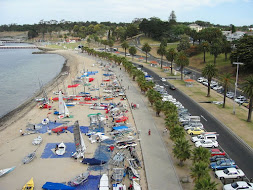
Places I've lived: Tamworth, NSW

Places I've Lived - Sydney
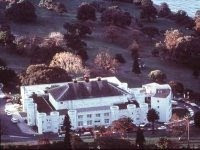
Sydney Conservatorium - my old school
Places I've lived: Auckland, NZ

Places I've Lived: Mount Gambier
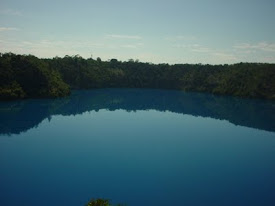
Blue Lake
Places I've lived: Adelaide, SA

Places I've Lived: Perth by Day

From Kings Park
Places I've lived: High View, WV

Places I've lived: Lynton, Devon, UK

Places I've lived: Braemar, Scotland
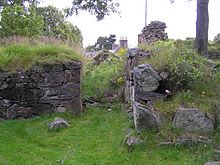
Places I've lived: Barre, MA, USA
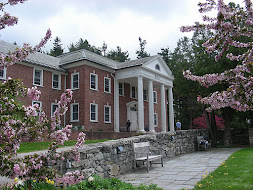
Places I've Lived: Perth by Night

From Kings Park
Versatile Blogger Award
Search This Blog
Sunday 30 August 2015
Buddhists confer #2
 |
| The Venerable Robina Courtin, one of the many fine speakers at the conference |
Once again, the audience was challenged and entertained by a variety of speakers. Unfortunately, public transport could not get me there early enough to hear the first session, in which Peter Fitzpatrick, Dr Eng Kong Tan, Dr Chien Hoong Gooi discussed depression and suicide, topics that touch many of us personally or tangentially.
The second session, Buddhist Journeys, involved Lhakpa Tsamchoe, Sarah Napthali, Bikkhu Buddharakkhita and Ven Miao You. If you saw the film ‘Seven Years in Tibet’ you will know the actress Lhakpa Tsamchoe, who spoke cheerfully and confidently about her journey. As a Tibetan layperson, her spiritual practice was entirely devotional, and it’s only in the last few years that she has started to meditate. However, she made up for the late start by undertaking a three year retreat, after training in the Goenka method of meditation practice. She showed us many fascinating slides of her career. It was almost a travelogue, showing us scenes from the USA as well as Tibet and India.
Sarah Napthali talked about emotional honesty and authenticity. These are hard lessons for all of us, and many of us do not learn them until mid-life, if we learn them at all. She learnt to meditate in order to cope with a difficult workplace. She learnt to judge her day by considering how much she remained in the present moment, rather than by how much she achieved.
The Venerable Miao You spoke on her transformation from corporate woman to Buddhist nun. At work she was known as ‘the dragon lady’ and freely admits that she is by nature a control freak who never said ‘sorry’. After a close shave in an accident she took counsel from a psychologist, who helped her to learn mindfulness through cognitive behavioural therapy. She realised that the practice of the six paramitas – generosity, morality, tolerance, energy, contemplation and insight – was a key factor in learning to live a wholesome life.
Bikkhu Buddharakkhita from Uganda had a conflicted path into Buddhism. Brought up as Roman Catholic, he only arrived at Buddhism after a journey through Bahai, born-again Christianity and Hinduism. He met the Dalai Lama, and like many who have met this amazing man, was deeply touched by his presence. He first encountered Buddhism in 1990 while living in India and was ordained at the Tathagata Meditation Center in California. I was very interested to learn that he spent eight years at the Bhavana Society, West Virginia, since I also went there in 1995 to study meditation under Bhante Gunaratana. (Believe it or not, I was seriously considering taking robes myself, but quickly realised that I did not have anything like the necessary degree of humility!) Bikkhu Buddharakkhita has also spent time at the Insight Meditation Society in Barre, Massachusetts, where I worked for over a year as their registrar. He has founded a monastery in Uganda.
The third session was fascinating. Dhammaruwan (who, like Bikkhu Buddharakkhita, has 'done time' at IMS and the Bhavana Centre) Dennis Sheppard, Prof Bernard Carr and Ajahn Brahm spoke on ‘past lives, hypnosis and psychic phenomena’. Sheppard pointed out that while hypnosis involves dissociation, meditation requires unification. Professor Carr, who studied under Stephen Hawking at Cambridge, spoke on the interface of science and Buddhism. They both, he said, involve the mind, and psychic phenomena link the two. The panel agreed that psychical research is the scientific study of unexplained interactions between mind and matter. Certainly many serious meditators report psychic phenomena arising spontaneously in their practice.
The final session of the conference involved Ajahn Brahmali, Ajahn Brahm and all the speakers with a final short concert from the Laura Bernay Jazz Ensemble! Ajahn Brahmali gave us a quick resume of the conference and its theme, with particular reference to the concept of ‘robots with consciousness! And, of course, the necessity to continually refer back to the basic teachings of the Buddha.
Whew! Congrats to any non-Buddhists who've made it through to the end!
Monday 24 August 2015
Sci-Fi and the Buddha dhamma
Let’s get back to the Global Buddhist
Conference, held in Perth over the second weekend in August. As promised, here is my take on the final
panel of Day One.
It was a
Lulu of a panel, especially for a conference concerned primarily with matters
spiritual! To me, as a writer, it was the dhamma taught by means of science fiction.
What is a cyborg? When does science
fiction become science fact? Where does the physical stop and the spiritual
start? Where does humanity stop and technology start? Where does imagination
stop and reality start?
As the
opening speaker on this panel, Bhante Sujato, reminded us ‘Jedi Knight is just
a subset of Buddhism’. The Jedi Knights, of course, are characters in the Star
Wars movies, and the concept of Jedi as a religion was probably seized upon first by people who resented
the census question on religious preference. The idea took off: at last count,
over 60,000 people in Australia chose to state ‘Jedi Knight’ as their religion
in the census. Jedi-as-faith took off in other countries, notably Canada and
especially New Zealand, where, if census figures are to be believed, it was the
second largest religion in 2001! Where does sci fi stop and religion start? It
will be interesting to see what the numbers are in next year’s Aussie census!
Can we
bring science and wisdom together to create the future? Neil Harbison, a real
live cyborg, suggests we can. He was born with vision that only recognises
grayscale: he cannot see colours at all. As he explains with a rueful smile, to
him, France, Italy and Canada all have the same flag!
A musician
as well as an artist, Harbison persuaded a surgeon to set him up with an
antenna that would enable him to ‘hear’ colours. The antenna sprouts from
within his occipital bone and is now a permanent part of his anatomy. He can
now ‘hear’ colours of all kinds, and can compose music just by observing the
world around him. Red comes out as the musical note F, blue is heard as C
sharp. He can even hear ultraviolet and infrared. And he can ‘listen’ to
people’s faces!
The next
speaker, Stelarc, is an artist with an interest in science, especially in
regard to the human form. He performs with mechanical and electronic devices
that through external stimuli program repetitive movements. Having seen Stelarc
perform before, I knew what to expect. It is quite eerie. Through movement, he
can activate a model of his head, complete with vocals. He looks forward to the
day when it will be possible to replace an ailing heart with one that works by
the same method and doesn’t even need to beat. Only a man who has had himself
strung up by metal hooks though his back and has a cartilage ‘ear’ implanted in
his arm could have that kind of imagination.
GuyBen-Ary, Artist-in-residence at the Centre of Excellence in Biological Arts at
the University of Western Australia, was the next speaker. Most of what he said
was beyond my comprehension, but I understand that he does really strange
things such as growing his own cells in a petrie dish then connects it to a
synthesiser to create abstract-sounding jazz. Check out his website to learn more.
Damith Herath
obtained his Ph.D. in robotics from the ARC
Centre of Excellence in Autonomous Systems
(CAS) at the University
of Technology, Sydney, having earlier completed his BSc Eng (Hons) degree
in production engineering from the University of Peradeniya,
Sri Lanka. He has worked as a researcher, academic and consultant in fields
related to Robotics, Automation and Manufacturing (and Robotic
Art).
What does intelligence mean in regard to machines? Date and
power do not add up to sentience or consciousness, Herath says, and we are a
long way off being able to create truly intelligent machines. Perhaps it is
actually impossible. But who knows? It has long been realised that SF
anticipates science and always has, ever since the days of HG Wells and Jules Verne. In response to a question from the
floor on the wisdom or otherwise of taxpayers’ money being spent on the arts, Herath assured us that Intel employs a writer to create sci-fi stories for the company’s
engineers to turn into reality.
Overall, this was, to a speculative fiction writer, the most
intriguing panel of the conference. It left me wondering, ‘Where does spec-fic
stop and the dhamma start?’
Next time, I'll write about day two of the Global Buddhist Conference.
Tuesday 18 August 2015
New opus from Marianne de Pierres
 Marianne de Pierres, one of my favourite Aussie novelists, has a new
book coming out in October. MYTHMAKER is the sequel to PEACEMAKER,
winner of the best SF book category in this year's Aurealis Awards. De Pierres
is a prolific and versatile author, having written crime fiction, YA fiction
and children’s books as well as SF and fantasy.
Marianne de Pierres, one of my favourite Aussie novelists, has a new
book coming out in October. MYTHMAKER is the sequel to PEACEMAKER,
winner of the best SF book category in this year's Aurealis Awards. De Pierres
is a prolific and versatile author, having written crime fiction, YA fiction
and children’s books as well as SF and fantasy.
And in case you can't wait until release date, here's the blurb:
Virgin’s in
a tight spot. A murder rap hangs over her head and isn’t likely to go away
unless she agrees to work for an organisation called GJIC with Nate Sixkiller
as her immediate boss. Being blackmailed is one thing, discovering that her
mother is both alive and the President of GJIC is quite another. Then there’s
the escalation of Mythos sightings, and the bounty on her head. Oddly, the
strange and dangerous Hamish Burns is the only one she can rely on. Virgin’s
life gets... untidy.
Joey HiFi 's artwork brilliantly foreshadows the story. And while you're waiting for MYTHMAKER, go and grab PEACEMAKER if you don't have your copy yet.
MYTHMAKER will be released in October by Angry Robot Books.
Saturday 15 August 2015
Buddhists Confer #1
Last weekend, Perth had the privilege of hosting the 9th Global Conference on Buddhism, thanks to the energy and enthusiasm of the Buddhist Society of Western Australia, together with Ajahn Brahmavamso Mahathera and his brother monks of the Bodhinyana Forest Monastery. It was heartwarming to see so many sects and ethnic groups all rejoicing in the teachings of the Buddha together.
There were friends from other faiths there too: Buddhism makes no claim to exclusivity and everyone was welcome to listen, question and comment. All the world's faiths preach peace and brotherhood amongst human beings, but Buddhism, so far as I can tell, is the only faith that teaches its followers how to do it. The fact that the various sects in Buddhism laugh at their differences rather than arguing over them says a lot about the way Buddhists think.
As if to emphasise the inclusive nature of Buddhism, the proceedings started with a really lovely 'Welcome to Country' with Bill, a wonderful singer and dijderidoo player, to entertain and enlighten us, followed by a fascinating talk from Gail Wynne on the history of the Nyungar tribes of the Perth region. The opening continued with an address from the Hon Dr Michael Nahan, MLA, who pointed out that Buddhist adherence in Australia has increased by 40% in recent years, with the Dalai Lama (head of one of the sects of Tibetan Buddhism, but universally honoured by Buddhists and other people of all faiths and none) attracting as large a crowd as the Rolling Stones. Dr Nahan made us laugh by telling the tale of a recent trip to Asia, where people continually asked if he knew Ajahn Brahm. When he responded in the affirmative, they immediately wanted to include him in a 'selfie'!
There was a video message from respected American monk Bhikku Bodhi, who spoke on justice. 'All beings' he said, 'need to be treated with compassion,' and to this end he'd founded the organisation Buddhist Global Relief to fight chronic hunger and malnutrition worldwide. The movement places great emphasis on improving the position of women and girls, endeavouring to keep girls in school and to raise the status of women generally in places where, sadly, they are still regarded as second-class citizens.
More than 800 people had come to the conference from all five continents and many countries, including Finland! The speakers were varied also - Robina Courtin, a nun in the Tibetan tradition, joked her way through her introduction, ending by telling us she was a 'radical Lesbian separatist feminist' who also supported the Sydney Swans, an Australian Rules Football team! Father Bob Maguire, an octagenarian Roman Catholic priest, echoed Bhikku Bodhi's words, saying that as a nation we needed to look after the 'unloved and the unlovely' members of our society. Father Bob can be sarcastic and cynical when speaking of the church hierarchy. 'There is a clash of cultures' he said. 'Either you put the church first or the poor first, and often Jesus' (who would certainly have done the latter) 'doesn't even get a look in'. He went on to say that we should ask indigenous leaders for spiritual instruction, because we need to learn to respect our ancestors and the natural world around us.' Father Bob ended his talk by saying he was a 'card-carrying non-paedophile' to which Ajahn Brahm added by saying he himself was a 'card-carrying heretic' because he ordained women!
The next panel discussion, 'Mindfulness is wellness' was presented by Piyal Walpola MD PhD; Ven Zinai Shi (Buddhist scholar, teacher and meditator with a special interest in the dialogue between Buddhist psychology and modern psychology) and Professor George Burns, Adjunct Professor of Psychology at the Cairnmillar Institute, Melbourne. They brought up some interesting links.
'Anxiety and depression', said Dr Walpola, 'are a result of distorted cognition'. (Buddhism lays much emphasis on seeing things as they really are, right now, in the present moment.) 'Clinging to ideas of how we want things to be can only lead to suffering' he went on. 'If we constantly ruminate on the past, it can lead to depression, and if we cling to thoughts of the future, anxiety often results. With mindfulness training, the sense of self decreases and sensory perception increases. This improves working memory and reduces cognitive decline.'
Venerable Zinai Shi spoke of the effects of mindfulness training on cancer patients. The main result was a sense of 'acceptance of uncertainty'. In conclusion, Prof. Burns showed us a picture of a toilet bowl with a fly painted on the inner surface. This was an effort to reduce 'spillage' in male public toilets, and apparently it worked well because the user was inclined to aim for the fly! Mindful urinating can be excellent awareness practice.
On that note I'll leave the conference for now, since the last panel of the day warrants a post of its own! It combined dhamma and science fiction. Yes, honestly!
There were friends from other faiths there too: Buddhism makes no claim to exclusivity and everyone was welcome to listen, question and comment. All the world's faiths preach peace and brotherhood amongst human beings, but Buddhism, so far as I can tell, is the only faith that teaches its followers how to do it. The fact that the various sects in Buddhism laugh at their differences rather than arguing over them says a lot about the way Buddhists think.
As if to emphasise the inclusive nature of Buddhism, the proceedings started with a really lovely 'Welcome to Country' with Bill, a wonderful singer and dijderidoo player, to entertain and enlighten us, followed by a fascinating talk from Gail Wynne on the history of the Nyungar tribes of the Perth region. The opening continued with an address from the Hon Dr Michael Nahan, MLA, who pointed out that Buddhist adherence in Australia has increased by 40% in recent years, with the Dalai Lama (head of one of the sects of Tibetan Buddhism, but universally honoured by Buddhists and other people of all faiths and none) attracting as large a crowd as the Rolling Stones. Dr Nahan made us laugh by telling the tale of a recent trip to Asia, where people continually asked if he knew Ajahn Brahm. When he responded in the affirmative, they immediately wanted to include him in a 'selfie'!
There was a video message from respected American monk Bhikku Bodhi, who spoke on justice. 'All beings' he said, 'need to be treated with compassion,' and to this end he'd founded the organisation Buddhist Global Relief to fight chronic hunger and malnutrition worldwide. The movement places great emphasis on improving the position of women and girls, endeavouring to keep girls in school and to raise the status of women generally in places where, sadly, they are still regarded as second-class citizens.
More than 800 people had come to the conference from all five continents and many countries, including Finland! The speakers were varied also - Robina Courtin, a nun in the Tibetan tradition, joked her way through her introduction, ending by telling us she was a 'radical Lesbian separatist feminist' who also supported the Sydney Swans, an Australian Rules Football team! Father Bob Maguire, an octagenarian Roman Catholic priest, echoed Bhikku Bodhi's words, saying that as a nation we needed to look after the 'unloved and the unlovely' members of our society. Father Bob can be sarcastic and cynical when speaking of the church hierarchy. 'There is a clash of cultures' he said. 'Either you put the church first or the poor first, and often Jesus' (who would certainly have done the latter) 'doesn't even get a look in'. He went on to say that we should ask indigenous leaders for spiritual instruction, because we need to learn to respect our ancestors and the natural world around us.' Father Bob ended his talk by saying he was a 'card-carrying non-paedophile' to which Ajahn Brahm added by saying he himself was a 'card-carrying heretic' because he ordained women!
The next panel discussion, 'Mindfulness is wellness' was presented by Piyal Walpola MD PhD; Ven Zinai Shi (Buddhist scholar, teacher and meditator with a special interest in the dialogue between Buddhist psychology and modern psychology) and Professor George Burns, Adjunct Professor of Psychology at the Cairnmillar Institute, Melbourne. They brought up some interesting links.
'Anxiety and depression', said Dr Walpola, 'are a result of distorted cognition'. (Buddhism lays much emphasis on seeing things as they really are, right now, in the present moment.) 'Clinging to ideas of how we want things to be can only lead to suffering' he went on. 'If we constantly ruminate on the past, it can lead to depression, and if we cling to thoughts of the future, anxiety often results. With mindfulness training, the sense of self decreases and sensory perception increases. This improves working memory and reduces cognitive decline.'
Venerable Zinai Shi spoke of the effects of mindfulness training on cancer patients. The main result was a sense of 'acceptance of uncertainty'. In conclusion, Prof. Burns showed us a picture of a toilet bowl with a fly painted on the inner surface. This was an effort to reduce 'spillage' in male public toilets, and apparently it worked well because the user was inclined to aim for the fly! Mindful urinating can be excellent awareness practice.
On that note I'll leave the conference for now, since the last panel of the day warrants a post of its own! It combined dhamma and science fiction. Yes, honestly!
Saturday 1 August 2015
Short Shorts, aka Flash Fiction
My friend and colleague Joanna Fay has a touching little story online at http://www.antisf.com.au/the-stories/pearl-white-a-winter-s-tale
Antipodean SF is a great place to look for short fiction of the speculative kind. No story has more than a thousand words and most are around 500. Short shorts are virtually unsaleable in a commercial sense, so it's a great outlet for authors with a file full of little literary gems like Joanna's Pearl White. Anti-SF's founder, Ion 'Nuke' Newcombe has kept the site running through thick and thin, so it has become Australia's longest-running online SF mag. He has even turned it into a radio show!
Joanna is the author of the Siaris series, which contains some of the most imaginative work it has ever been my privilege to read. She is also the founder of an SF award for speculative poetry and short fiction. Look for more details at https://interstellaraward.wordpress.com/interstellar-award-for-speculative-poetry/ and to learn more about Jo's work, check out her website: http://joannafay.me/
Antipodean SF is a great place to look for short fiction of the speculative kind. No story has more than a thousand words and most are around 500. Short shorts are virtually unsaleable in a commercial sense, so it's a great outlet for authors with a file full of little literary gems like Joanna's Pearl White. Anti-SF's founder, Ion 'Nuke' Newcombe has kept the site running through thick and thin, so it has become Australia's longest-running online SF mag. He has even turned it into a radio show!
Joanna is the author of the Siaris series, which contains some of the most imaginative work it has ever been my privilege to read. She is also the founder of an SF award for speculative poetry and short fiction. Look for more details at https://interstellaraward.wordpress.com/interstellar-award-for-speculative-poetry/ and to learn more about Jo's work, check out her website: http://joannafay.me/
Subscribe to:
Posts (Atom)
